Want to upgrade your deck but watching your budget? Here are 5 easy deck makeover ideas, many well under $300.
1. Add Solar Lighting
If you’d like your wood deck to come alive when the sun goes down, add solar lighting. Solar lights don’t need an on/off switch — they light up when it gets dark, then fade away 4-6 hours later.
You won’t have to plug them in or wire anything, either. Their solar-charged batteries are renewed every day, and the lights are built to withstand all kinds of weather.
Types and cost:
- Paper lanterns (made from synthetic, weatherproof nylon; $20-$30) are made for hanging and come in all sorts of fun shapes, sizes, and colors.
- Carriage lights can be fixed on top of a pillar or railing newel post. $45-$150.
- Solar illuminated replicas of old-fashioned mason jars can be set on any flat surface, about $35.
- Rope lights have small LED bulbs inside a flexible cord. A 25-foot-long rope with solar charger and stand is $25.
What else: Suspend lanterns from overhead trellises, railings, and nearby trees, where they’ll shed a soft, colorful glow. Wind rope lights around rafters and railings.
2. Install a stone landing at the foot of your deck stairs
3. Put up a privacy screen
4. Paint a faux floor rug on your decking
5. Wash and refinish your wood decking
2. Install a Stone Landing at the Foot of Your Deck Stairs
Dress up the transition from your deck to your yard with a little hardscaping — a stone landing at the bottom of your deck stairs. Stones are a natural compliment to wood decks, and they’ll help prevent mud from forming where there’s heavy foot traffic.
Cost: Flagstone is priced by the pound; you’ll spend $60-$100 for enough stone for a 3-foot-by-4-foot landing.
How-to: Techniques for installing a landing are the same as putting in a patio, although you’ll have to temporarily support your existing stairway while you work around — and under — it.
What else: You should be able to add a landing in less than a day. It’ll get done faster if you hire a pro, but it’ll cost you another $150-$200 in labor.
3. Put Up a Privacy Screen
Whether you’re relaxing alone au naturel or entertaining friends, a little home privacy is always welcome. You can add some vertical supports and fill in a variety of cool screening materials that are as nice for your neighbors to look at as they are for you.
Types and costs:
- Bamboo fencing comes in a 6-foot-by-16-foot roll for $20-$25.
- Lattice panels are either wood or plastic, $15-$30 for a 4-foot-by-8-foot panel.
- Grow climbing plants on a trellis ($20-$100) to create a living privacy screen. Plant climbing vines in tall containers ($40-$120) to raise them above the deck surface and give them a head start filling in your screen.
- Outdoor fabric resists moisture and fading; $12-$120 per yard. You’ll pay another $20 to have a seamstress cut and hem a 3-foot-by-5-foot panel.
How-to: Your privacy screen should integrate with your deck; make the framework using the same basic materials as your deck railing and structure.
Add some flash by building a frame with 2-by-2- or 2-by-4-inch uprights spaced 1 foot apart, then weaving aluminum flashing between the uprights.
What else: Make sure to position your privacy screen where you’ll get maximum benefit. Sit on your deck and check your lines of sight.
4. Paint a Faux Floor Rug on Your Decking
Punch up a boring old deck with a faux rug. This is a fairly low-cost project with a big wow factor, and one you can share making with your (well-behaved) kids. It works best on a newly cleaned deck (see below).
Cost: Most of your cost will be deck stain or paint in various colors. Because you won’t be using that much stain per color, you can buy quarts. Figure $15-$20 per quart.
How-to: Figure out a size, sketch out the design on your decking, and then all you have to do is paint or stain between the lines. You can use painter’s tape as a guide, but a little leakage is likely on a wood decking surface.
What else: Keep a few basic cleaning supplies on hand for any drips or spills. After the stain is dry, coat the entire deck with a clear deck sealer.
5. Wash and Refinish Your Wood Decking
The ultimate deck makeover is none other than a good cleaning. Applying a coat of deck sealant afterwards ensures your wood decking looks great and will last for decades.
Cost: There are many brands of deck cleaning and brightening solutions. Some require the deck to be wet; others need the decking to be dry. Some are harmful to plants and you’ll have to use plastic sheeting to protect your landscaping. Consult the instructions carefully.
You’ll pay $15-$25 per gallon, enough to clean 300 sq. ft. of decking.
How-to: Scrubbing with a good cleaning solution and rinsing with a garden hose is more foolproof than scouring your decking with a power washer that may damage the surface of the wood.
What else: After you deck is cleaned, apply a coat of deck stain or clear finish. The sealer wards off dirt, wear, and UV rays, and helps prevent deck splinters. A gallon covers 250-350 sq. ft., $20-$35/gallon.

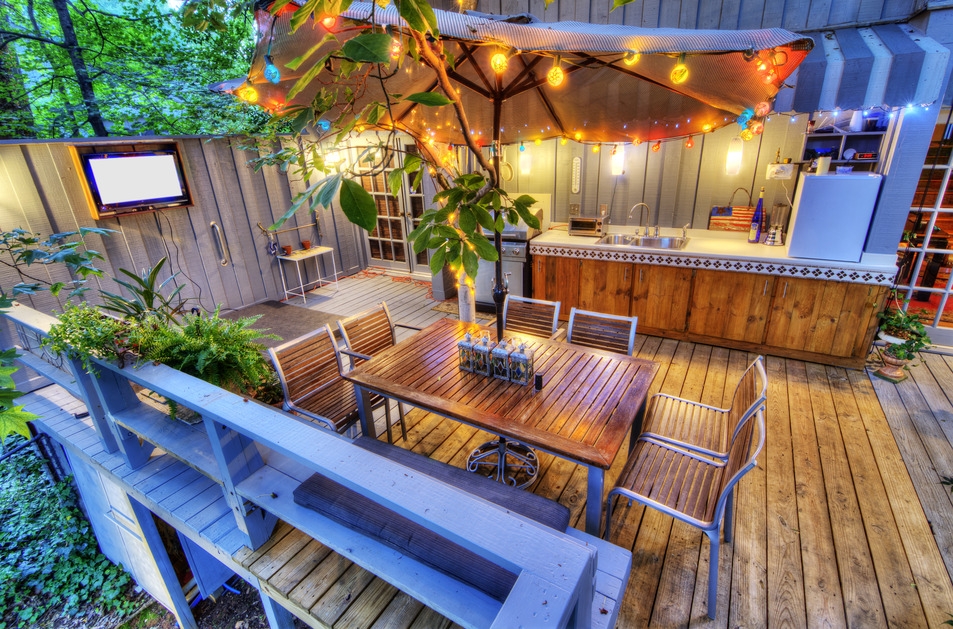




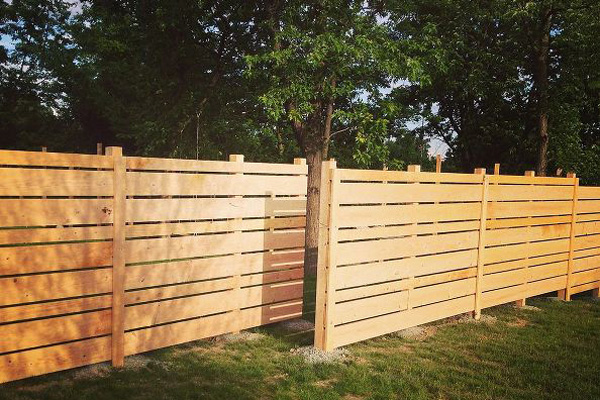
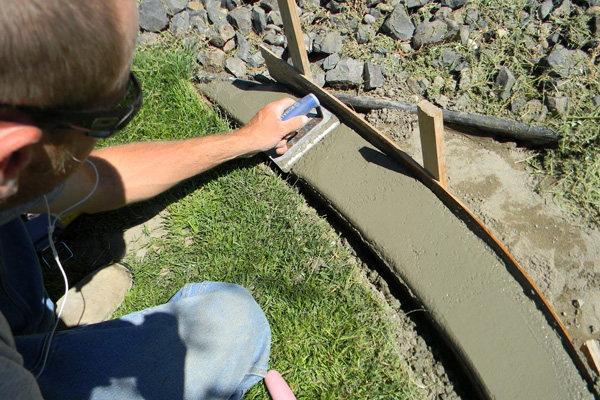
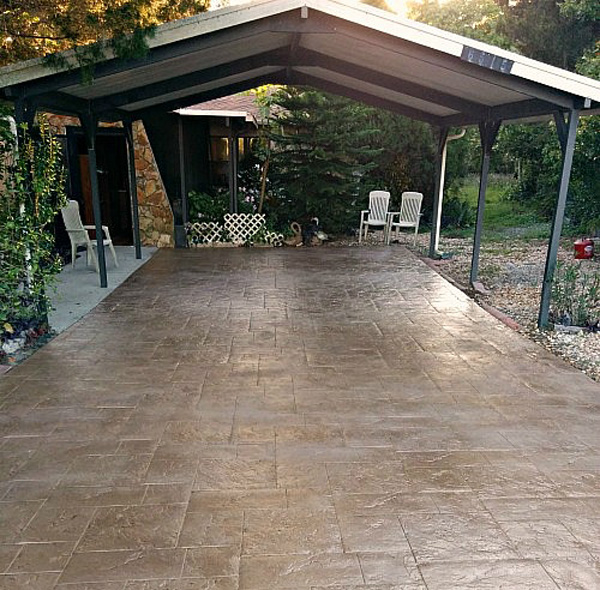 Image: DIY Fun Ideas
Image: DIY Fun Ideas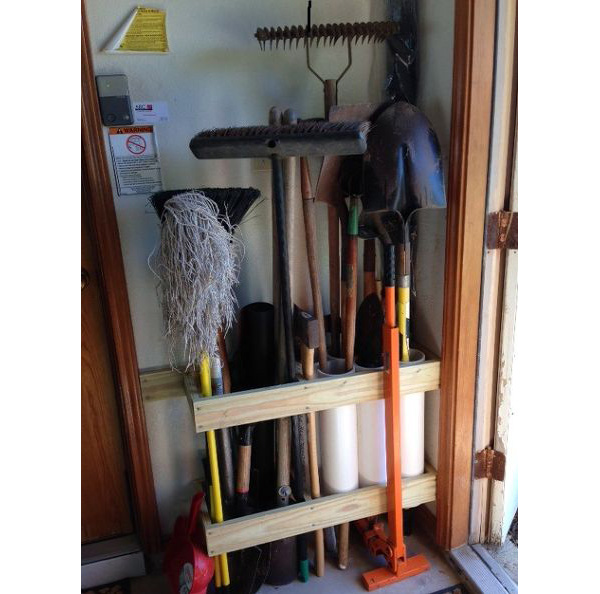 Image: Ouina, HomeTalk.com contributor, Edinburg, Texas
Image: Ouina, HomeTalk.com contributor, Edinburg, Texas